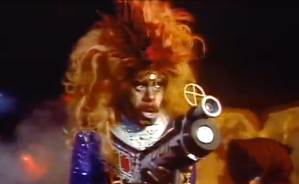Make Funny Jokes Funnier Series

In Best to Put Puns in the Joke Setups – Tip 6, I’ll compare several different approaches to using puns, play-on-words, double entendres, ambiguous words or phrases, and double meaning words in the joke setups rather than in punchlines for stand-up comedy jokes. Comedians strive to get the biggest laughs from joke setups and punchlines, so here’s one “how to” trick of the trade to maximize your stand-up comedy audiences’ laughter with joke setups.
Table of Contents
Tip 6 – To Pun in the Joke Setups is since puns have been used since ancient times, in the Sumerian cuneiform, Egyptian hieroglyphs, and of course, Shakespeare. Clever use of language has always been a major source of entertainment and humor.
Puns may be useful for pun-ishing your friends. Yet in professional stand-up comedy, puns can get laughs or produce groans. That’s probably because good joke setups, like a good magic trick, is more effective if the audience doesn’t see how it’s done.
No form of joke displays its inner workings more overtly than a pun. It seems puns emphasize, “Look how clever I am with words,” rather than revealing the humor of the joke.
This article focuses on the use of puns to show how to write funnier jokes for stand-up comedy, particularly one-liners, and how to avoid getting groans instead of laughs.
Do You Want to Get a Laugh or a Groan?
As a stand-up comedy teacher, when I talk about how pun can get laughs or groans. There’s no correct answer. I’ve seen famous comedians get huge laughs with puns, then in the next one show it gets a groan in another.
I’ve had students disagree with my view on puns, saying, “Well, it’s better to get a groan than no response at all.” Of course, it’s up to you, but be clear about your goals.
If you want to get groans, then by all means pun it up. If your aim is to develop a 5 laugh per minute comedy show, then learn to use puns in to get laughs, not groans.
My question is “Do you want your jokes to get laughs or groans?” The answer is none of my business. My job is to help everyone articulate their own sense of humor. I avoid dictating such matters in my stand-up comedy classes.
If a student says, “I only want to get laughs. I don’t like groans,” then I teach them a few joke writing techniques that use puns and the like to elicit laughs.
Here are a few how to make funny jokes funnier tips:
Put the Pun Word or Phrase in the Setup
A technique I’ve discovered over my 40 years of teaching joke writing for stand-up comedy is stop putting the pun at the end of the punchlines. This accentuates the puniness.
For instance, this joke with the pun at the end of the punchline:
“He’s on suicide watch, so we hid the cheddar cheese to keep him away from everything that was sharp.”
In this modern, jaded, overexposed, demanding, and critical global media, it might get a groan. Not always, but more often than not. The play on words overshadows the humor expressed by the joke.
If you prefer a laugh over a groan, the technique I teach is to put the pun word or phrase in the jokes setups.
For instance, the previous joke could be written:
“He’s on suicide watch, so we hid everything that was sharp. Even the cheddar cheese.”
Now you’re using the ambiguous pun, “sharp” as a misdirection device in the jokes setup to make the audience think you’re going to make a joke about hiding knives and such. When the punchline reveals “cheddar cheese,” it’s expressing the humor of the exaggerated precaution.
This joke stresses the worry and overcompensation of those keeping him from using anything sharp to harm himself. From my experience, and most true, gets a bigger and better laugh. Whereas the original not in the joke setup will probably get a groan
Make it your practice how to make funny jokes funnier tip to put the pun words or phrases in your joke setups, and then you can write jokes that get laughs. Here are a couple more examples of puns in the joke setups:
Female Comic: “I’m dating again, so I bring some feminine protection. My Grandmother.”
One more with the pun in the joke setups.
“After my divorce I had a sex change. From very seldom to not at all.”
You get the idea of putting the pun in the joke setups.
Groans Can Grow
A major downside of getting groans is they can take over an audience like a virus. One groan gestates into two groans, then the third joins in. The audience gets to participate, so it’s fun.
There are mirror neurons in our brain that are susceptible to yawns, laughter, and also groans. Soon you have an audience that only groans, even if the jokes or bits that otherwise get laughs.
Make sure your jokes are not the carrier. The groaning can spread like a sickness that infects and destroys your own stand-up comedy show. When it reaches an epidemic, it becomes a form of heckling.
Have Funny Comebacks for Groans
You needn’t be a victim of groans. Be proactive and write some comeback jokes to embarrass the person who groans instead of laugh.
For instance, in San Diego, at Balboa Park, I watched a street juggler shut down a groaner with this put-down:
“Look, if you had any taste, you wouldn’t be here in the first place.”
He was prepared. This kind of joke is called a floater. It floats in your unconscious mind until the moment arises to use it.

In this joke writing article, Put Puns in the Joke Setups, you’ve learned that puns can get laughs or groans. Try the joke writing technique of placing the pun word or phrase in the joke setups to find out if it turns a groan into a laugh to improve your stand-up comedy shows.
Previously in this How to Make Funny Jokes Funnier Series of joke writing articles, you learned
Short Setups and Punchlines – Tip 1
End Punchlines with the Reveal – Tip 2
Use K-Words Make Better Punchlines – Tip 3
Localize Comedy Routines – Tip 4
Strong Punchlines are Negative – Tip 5
With your growing knowledge you should be getting better and better at writing joke setups and routines for the stand-up comedy stage.
In the next Making Funny Jokes Funnier Series: Original Jokes Killed by Comedy Cliches – Tip 7, you’ll learn to identify and avoid old tired phrases that all hack comics use to write fresh original jokes.
Greg Dean’s Stand-Up Comedy Classes
Greg teaches his techniques in Level 1 – How to Build a Stand Up Comedy Routine is the beginning class (also called the “101 class”) that teaches you everything you need to know to build and perform a stand-up comedy routine. Level 2: Writing & Performing at the Improv (also known as the “201 class”) guilds you through the process of building a routine and preparing to perform at one of the world’s most prestigious comedy clubs.
Even though these classes are named a beginning and advanced, they are actually classes that stand up comedians of any number of years of experience can take. They are beginning and advanced in the Greg Dean system. If you’re interested in faster and better ways to create good jokes and you want to dive deeper on joke writing then you’ll want to take both of these classes.
Gone are the days when learning stand-up comedy meant endless open mics and uncertain feedback. Now, with professional guidance and support, you can confidently navigate the world of comedy and cultivate your unique comedic voice.
Free On Demand Webinar: How to Build a Stand Up Comedy Routine

Are you ready to fast-track your stand-up comedy career? In this on-demand webinar, discover proven techniques and skills that can shave years off your journey to success! Learn how the pros build a compelling and hilarious stand-up routine with expert guidance. Don’t miss out on this chance to see how you can achieve your dreams faster.










